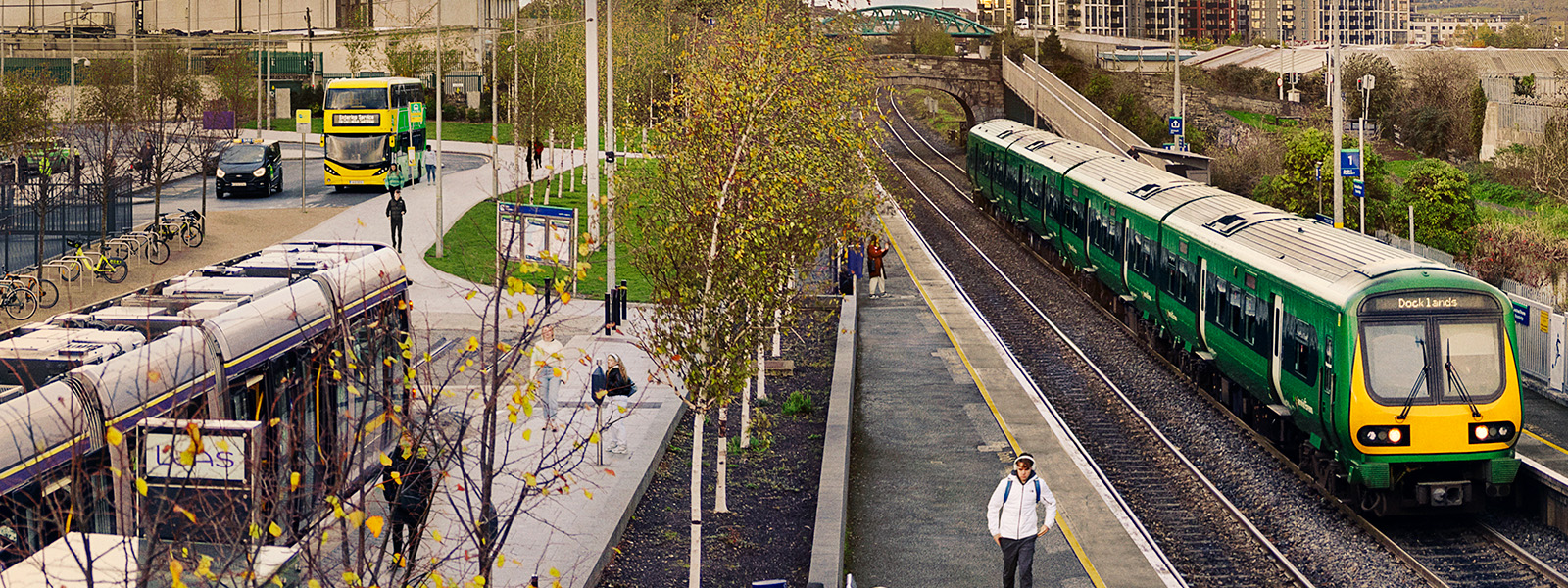Chairperson and members of the committee, thank you for the invitation to attend. I understand that the Committee wishes to focus upon the Draft Transport Strategy for the Greater Dublin Area 2022-2042, which I will refer to as the “Draft Transport Strategy”. To assist me in dealing with your subsequent questions I am joined by Hugh Creegan, Deputy Chief Executive with the Authority.
As the Committee will be aware, the NTA published the Draft Transport Strategy for public review and feedback in November of last year, with the period for submissions running until 10th January last.
The NTA received 1,020 submissions in response to this consultation process. The main issues raised, in no particular order, were as follows:
1. Ambition and Delivery Timelines;
2. Public Consultation and Engagement;
3. Details of the Cycle Network Plan;
4. Fare Structure on Commuter Rail Services;
5. Navan Rail Line and the Dunsany Rewilding Project;
6. MetroLink and Charlemont Station;
7. Metro to South West Dublin;
8. BusConnects Network and Core Bus Corridors;
9. Details of the DART+ Project;
10. Delivery of DART+ Tunnel;
11. Extension of DART+ Services to Commuter Towns;
12. New Rail Stations;
13. Accessibility and Catering for Disabled People;
14. Safety and Security of the Transport System;
15. Equality in Transport; and
16. Enforcement of Traffic Laws.
Beyond these sixteen main issues, which covered the vast majority of representations made, there were a large number of other matters raised across the spectrum of transport and planning themes.
All of the submissions were carefully reviewed and considered. Arising from this process a number of changes have been made to the Draft Transport Strategy. While a considerable number of amendments have been incorporated, many of these are minor in nature and, overall, the amendments have not altered the fundamental features of the transport strategy. It is also worth noting that a considerable number of the submissions raised items that are more appropriately dealt with at the project development level, rather than at the strategy level.
Many of the changes which have been made are in the nature of clarifications, making clearer the intent of the particular measure proposed. In other cases additional measures have been added, such as requiring sustainable transport to be a critical consideration in the site selection process for new schools.
Various additions and changes have been made to the cycle network proposals, informed by issues identified in submissions. Other sections of the Draft Transport Strategy were expanded to take account of feedback received, such as the section on “Equality in Transport” which has received further elaboration. The Draft Transport Strategy was also updated to take account of additional transport policies, such as the National Sustainable Mobility Policy which was published earlier this year. In addition, an explicit provision has been included requiring the NTA to prepare and publish a Demand Management Scheme in accordance with the Dublin Transport Authority Act 2008, within two years of the adoption of the strategy, to ensure the achievement of the transport emissions target for 2030.
In accordance with the relevant legislation, the Draft Transport Strategy has been now been forwarded to the Minister for Transport for his consideration and determination. We look forward to the outcome of the process and the subsequent progression of the various proposals set out in the Draft Transport Strategy.
